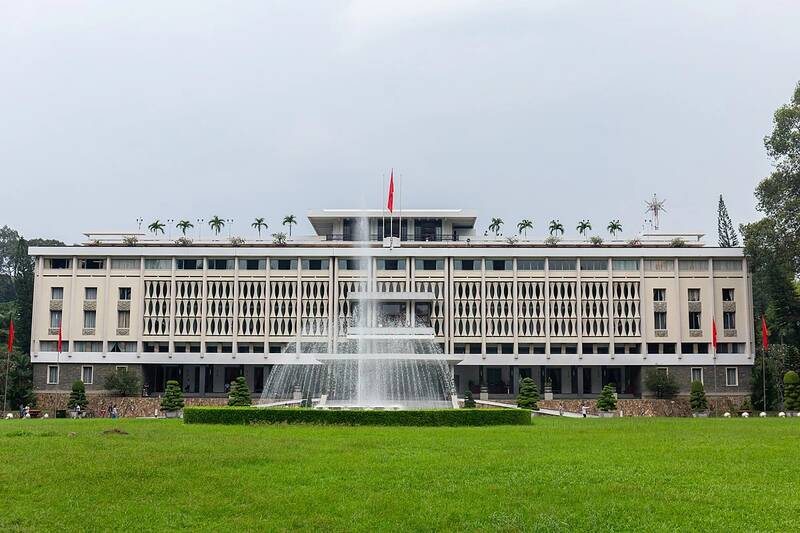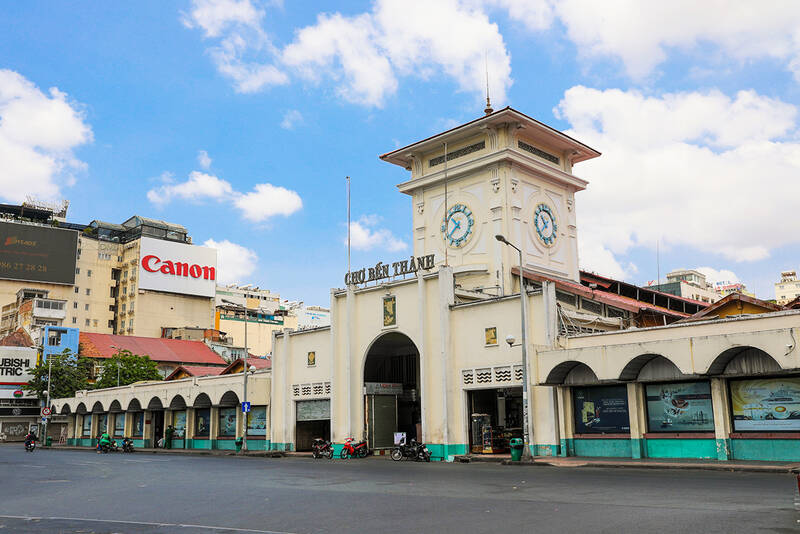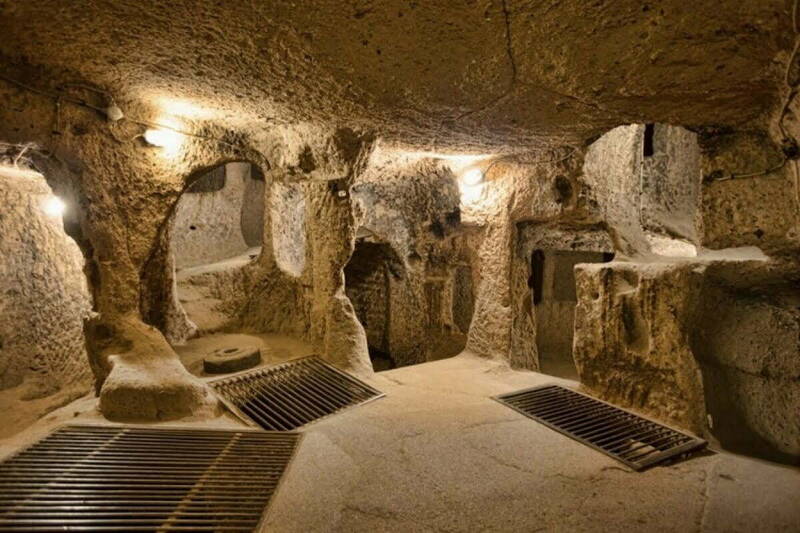What to do in Ho Chi Minh City in 3 days? There are many things to talk about about this city, from historical landmarks and unique architectural marvels to bustling streets and diverse cuisine. So, three days might seem a bit short to have a full exploration.
But if you only have 3 days to explore this thriving modern metropolis, nothing more and nothing less, Vietnam Adventure will do our best to help you make the most of your time to have an exciting itinerary that captures the essence of this vibrant city!
Day 1: Explore History And Culture
It is ideal to immerse yourself in the vibrant history and culture of a city steeped in significant historical events. If you don’t know, Saigon (the name of the city before liberation) served as the capital of the former South Vietnam regime.
War Remnants Museum
Established on September 4, 1975 (the same year of liberation), the War Remnants Museum is among the most significant and renowned historical landmarks in Vietnam. The museum serves as a poignant reminder of the Vietnam War by showcasing its remnants – All with the hope of promoting peace and condemning the devastating consequences of conflict.
The museum is divided into several exhibition areas, each focusing on a different aspect of the war and its aftermath. The outdoor area displays military equipment such as helicopters, tanks, and fighter jets used during the war. Meanwhile, inside features a variety of rooms that present photographs and artifacts depicting the horrific impact of the anti-US resistance war.
Reunification Palace
The Independence Palace is indeed a crucial emblem intertwined with numerous significant events in the history of Vietnam. This building was originally constructed in 1868 during the French colonial period with the first name Norodom Palace.

During the era when Vietnam was divided into two regions, the architectural masterpiece served as the residence of the Presidents of the Republic of Vietnam. That means it also functioned as the central seat of power for the South Vietnamese government throughout its existence.
On April 30, 1975, a tank from the People’s Army of Vietnam famously crashed through the main gate, and then the flag of the Liberation Army flew on top of the palace. This iconic moment was the fall of the Republic of Vietnam, the end of the Vietnam War, and a new chapter in the nation’s history.
Notre-Dame Cathedral Basilica of Saigon
Standing tall in the heart of Saigon since 1880, the Notre-Dame Cathedral Basilica (aka the Saigon Notre-Dame Basilica) is one of the most iconic architectural marvels of the city. This cathedral is also a place of worship for Catholics and a captivating tourist attraction that draws various visitors worldwide.
Two bell towers of the cathedral soar to a height of 58 meters, and a serene statue of Our Lady of Peace graces the front. Inside, the cathedral offers a spacious sanctuary adorned with exquisite stained-glass windows depicting biblical scenes.
Day 2: Taste Vietnamese Cuisine
For your second day in the city, exploring the urban area and enjoying culinary delights is not a bad idea.
Ben Thanh Market
At over 110 years old, Ben Thanh Market now doubles as both a shopping hub and a fascinating tourist attraction, drawing millions of visitors each year. The market has four main entrances and twelve side ones, with the southern gate featuring a bog clock tower that has become a symbol of the market itself.

Ben Thanh Market offers a diverse array of goods, ranging from clothing, shoes, and bags to souvenirs, handicrafts, food, and unique Vietnamese specialties. The food court within the market is a real culinary paradise where you can savor Southern Vietnam’s signature dishes such as pho, banh mi, bun thit nuong, goi cuon, as well as an assortment of sweet treats and desserts.
Vietnamese Cooking Class
Another great way to explore Saigon’s culinary scene is by signing up for a cooking class to learn how to prepare authentic Vietnamese dishes. The class offers a hands-on experience, allowing you to recreate the rich and diverse flavors of the local food scene with your own hands.
Such a class often starts with a visit to a local market, where you’ll discover a plethora of fresh ingredients. Then back in the kitchen and the real fun begins. You’ll be guided step-by-step in crafting traditional dishes like pho, goi cuon, bun thit nuong, and many other delicious specialties.
As you chop, stir, and season, you’ll not only enhance your cooking skills but also gain a deeper understanding of the deep stories behind each dish.
Enjoy a Dinner Cruise on the Saigon River
There’s something truly magical about witnessing the glittering beauty of Saigon at night. Various towering skyscrapers illuminated by dazzling lights and the romantic atmosphere by the river – All result in a beautiful picture. As you watch the city breathe and live at the end of the day, you’ll indulge in exquisite prepared traditional Vietnamese or European dishes.
Day 3: Explore local life and nature
On the last day of the itinerary, let’s explore some of the famous local attractions.
District 1 (downtown)
District 1 in Ho Chi Minh City is a bustling central area of the city. Whether you’re on the hunt for fashionable clothing, unique souvenirs, or handcrafted items, this place has it all.
As you wander the streets, you’ll encounter countless cafes with the irresistible aroma of freshly brewed coffee. So take a moment to relax, sip on a traditional Vietnamese coffee, and watch the city’s vibrant life unfold before your eyes, why not?
What’s more, the streets and alleys are filled with street food stalls, making District 1 a true haven for food lovers. From familiar Vietnamese dishes like pho, bun bo Hue, and banh mi to specialties like hu tieu, banh xeo, and goi cuon, you can find it all right on the street.
Saigon Botanical Garden and Zoo
The Saigon Botanical Gardens and Zoo, commonly referred to as Thao Cam Vien Saigon, is one of Ho Chi Minh City’s oldest and most famous attractions. Covering an expansive 20 hectares, this site is home to over 1,300 animals from 125 different species and more than 2,500 trees across 900 plant species.
In the zoo, you can observe and learn for yourself about a variety of wildlife, from well-known animals like lions, tigers, and elephants to rarer species such as white rhinos and giraffes. The botanical gardens are equally impressive with a vast array of ornamental plants, flowers, and medicinal herbs.
Visit to the Cu Chi Tunnels
Located about 70 km northwest of Ho Chi Minh City, the Cu Chi Tunnels served as a crucial military base for the Viet Cong during the Vietnam War.
Constructed in the late 1940s and expanded throughout the 1960s, the well-organized tunnel system spans over 250 km and features multiple underground levels. These intricate tunnels connect key facilities such as hospitals, kitchens, weapon caches, and living quarters for the soldiers.

Nowadays, visitors have the unique opportunity to crawl through narrow passageways, gaining insight into the daily lives and struggles of the soldiers who inhabited these tunnels.What more’s, visitors can engage in activities such as sport shooting and viewing exhibits of weapons and military equipment.
Conclusion
So to help you answer the question “What to do in Ho Chi Minh city in 3 days?”, Vietnam Adventure has given an itinerary to help you make the most of your visit. We hope this guide will help you create unforgettable memories that will last a lifetime.

 Ms.Mita
Ms.Mita